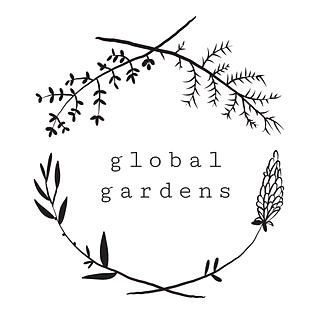CROPSHARE #2: Coriander seeds
- Global Gardens
- Oct 8, 2020
- 3 min read

Coriander or Coriandrum Sativum is also known as cilantro or Chinese parsley.
It is a tender annual herb grown for its edible leaves and seeds. The leaves and seeds have two distinct flavours. It is native to Southern Europe and the Middle East and was brought to the United Kingdom by the Romans.
If you let coriander go into flower, it will produce white umbrella-like flowers, that, in time, will turn into seeds. Coriander seeds can be harvested early autumn, when coriander has completed its growth cycle.
Coriander seeds are best bought whole, and then dry-toasted and ground as you need them- that way essential oils in coriander are fresher and the seeds will be more fragrant and flavoursome. Fry them in a pan with no oil, stirring them constantly. When you start smelling coriander aroma- the oils are released. Turn the heat off, let the seeds cool and then crush them with a spice grinder or pestle and mortar.
Like with all spices, for most freshness and flavour it’s best to store coriander seeds in an airtight container, in a dark cool place.
The seeds are very fragrant and add slightly citrusy, nutty and warming flavours to the dish. It combines well with other warming spices such as ginger, cardamon, cinnamon.
Coriander seeds are used both in savoury and sweet dishes. It is included in different spice and nut mixes, such as dukkah, garam masala and used in curries, pickling, sauces, soups and vegetable dishes generally. It is also used in bread baking as an alternative to caraway seeds, or in cakes and biscuits. It can be added to mulled apple juice or wine.
Coriander seeds are a source of dietary fibre and some minerals - calcium, iron, magnesium, selenium and manganese. It also contains small amounts of fat and protein. In herbal medicine coriander seed is regarded as a carminative - a spice which is rich in volatile oils that has antiseptic properties. It also helps with food absorption, have antispasmodic qualities and prevents bloating.
Growing Coriander
We recommend sowing coriander regularly for a continuous supply of the herb - we try to sow every month in the few days leading up to full moon. Sow a few seeds in a medium-sized pot, cover lightly, water well and keep in a warmish spot. A sunny window-sill is ideal. Once the seeds have germinated, keep soil moist but not over watered and enjoy the fragrant leaves.
Fragrant roasted apples with coriander

This is a simple dish to celebrate what's in season at this time of the year. Coriander is a less obvious choice to use in this dish, but its warming and citrusy qualities pair up well with sharp and fruity apples. You can have it as a dessert, or even as a breakfast.
4 apples (cooking or eating)
1 tsp whole or ground coriander seeds
1/2 tsp whole or ground fennel seeds
2 tbsp hazelnuts, roughly chopped
1-2 tbsp honey, maple syrup or other sweetener (adjust the amount depending on the sweetness of apples)
1-2 tbsp butter (coconut oil)
If you are using whole coriander and fennel seeds dry - toast them for a few minutes in a pan, till you can sense the aroma in the air. Let them cool and then grind them in a spice grinder or with a pestle and mortar.
Cut out the core of the apples and remove the seeds. Melt honey and butter (or coconut oil) in a pot. Mix spices and nuts together in a separate bowl.
Place the apples in the roasting tin, fill them with spice mixture, and pour over butter and honey. Cook it in the oven at 180C for around 40 mins or until apples are soft. As you roast them, you will notice your kitchen fill up with an incredible fruity fragrance.
It's great served with a spoonful of yoghurt or cream and extra honey or maple syrup drizzled on top.
Vaida is food coordinator at Global Gardens and a food blogger at onesmallspoon.com












Comments